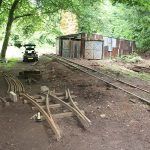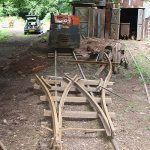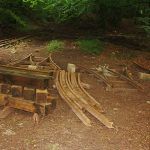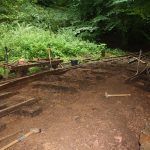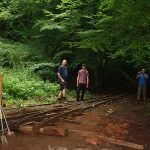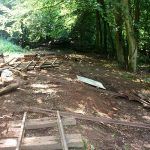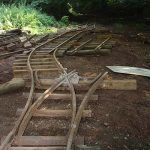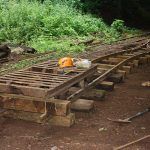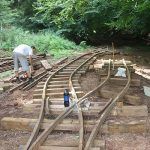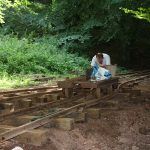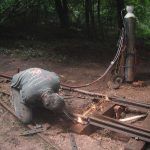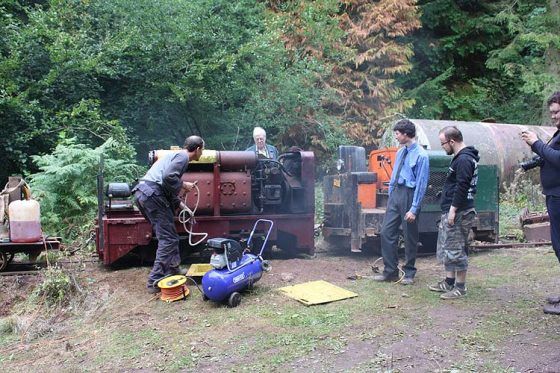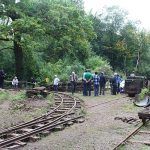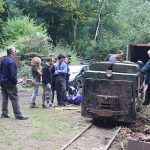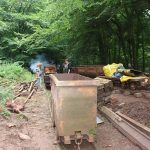New Passing Loop
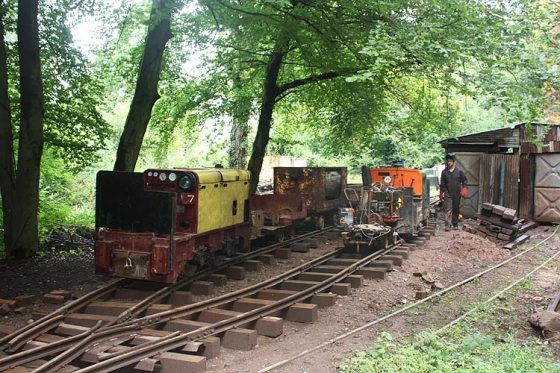
On 15th June we used Jack’s Land Rover to haul the two prefabricated Y points out of Euroclydon tunnel, where they had been rusting away propped up against one side of the tunnel. Then on 22nd June Pat drove his Land Rover up from Devon, on the way collecting a 2 axle trailer from Chris at Old Sodbury. With a Tirfor winch the points were hauled onto the trailer and moved to Lea Bailey (the pressed steel sleepers of the two sets of points had locked together and we could not separate them, so the two were loaded as one item!) When we had an excavator at Lea Bailey over the first weekend in July, we used it to separate the two sets of points. And then started thinking about how to use them. After some thought, a run-round loop seemed to be the best option as it would give use much improved flexibility in use of locos and wagons by being able to shunt them around without so much pushing by hand.
So in August we started building up the soil level either side of the track where we were going to lay the loop and also experimented with the jim crow from Clearwell to see how easy it would be to bend the rails required for the loop. It was easier than expected, although the 35lb/yd rails that we have are probably the heaviest we can do with the jim crow that we used. (The 35lb rails were from the stock that we unearthed earlier in the culvert by the mine site boundary.)
Then over the following two weeks we stocked up with sleepers from the stack in Euroclydon tunnel, and new bolts and second hand fishplates from Alan Keef. The point operating arms were straightened and point blades made operable. Concrete was cleaned off the points.
Finally on 24th August we started taking up the track where the loop was to be laid and put the first set of points in place. By the end of the day two pairs of straight rails had also been laid. By the 26th the second set of points was in place and one side of the loop had been laid (but not yet spiked to the sleepers or fish-plated). On 1st September the final rails were laid and we tested it with the push trolley. In a couple of places the gauge was slightly out, and was adjusted with a sledgehammer. Over the following two weeks, the rails were spiked to the sleepers and on the 12th Gareth, the blacksmith from Longhope, came and cut holes for the fish-plate bolts to enable fishplating to be completed. After a final check of the track, both tracks of loop were tested with both locos and some wagons a week before the open day. Since then one damaged and worn point blade has been replaced with a new one cut from a piece of 35lb rail (the points are otherwise slightly smaller rail section).
Now the loop is proving useful and is used almost every time we have the locos running.
